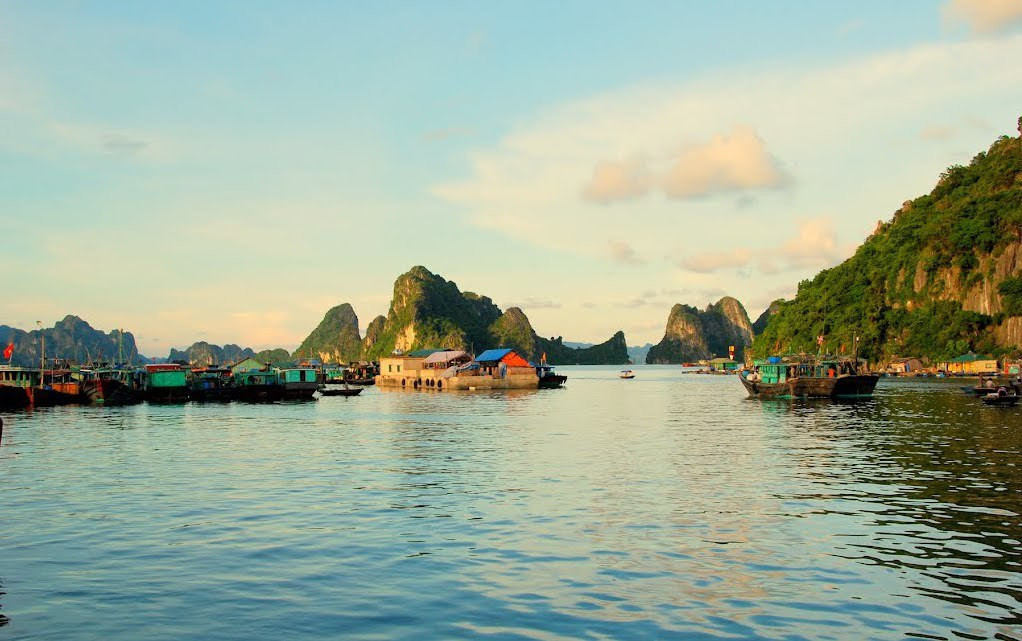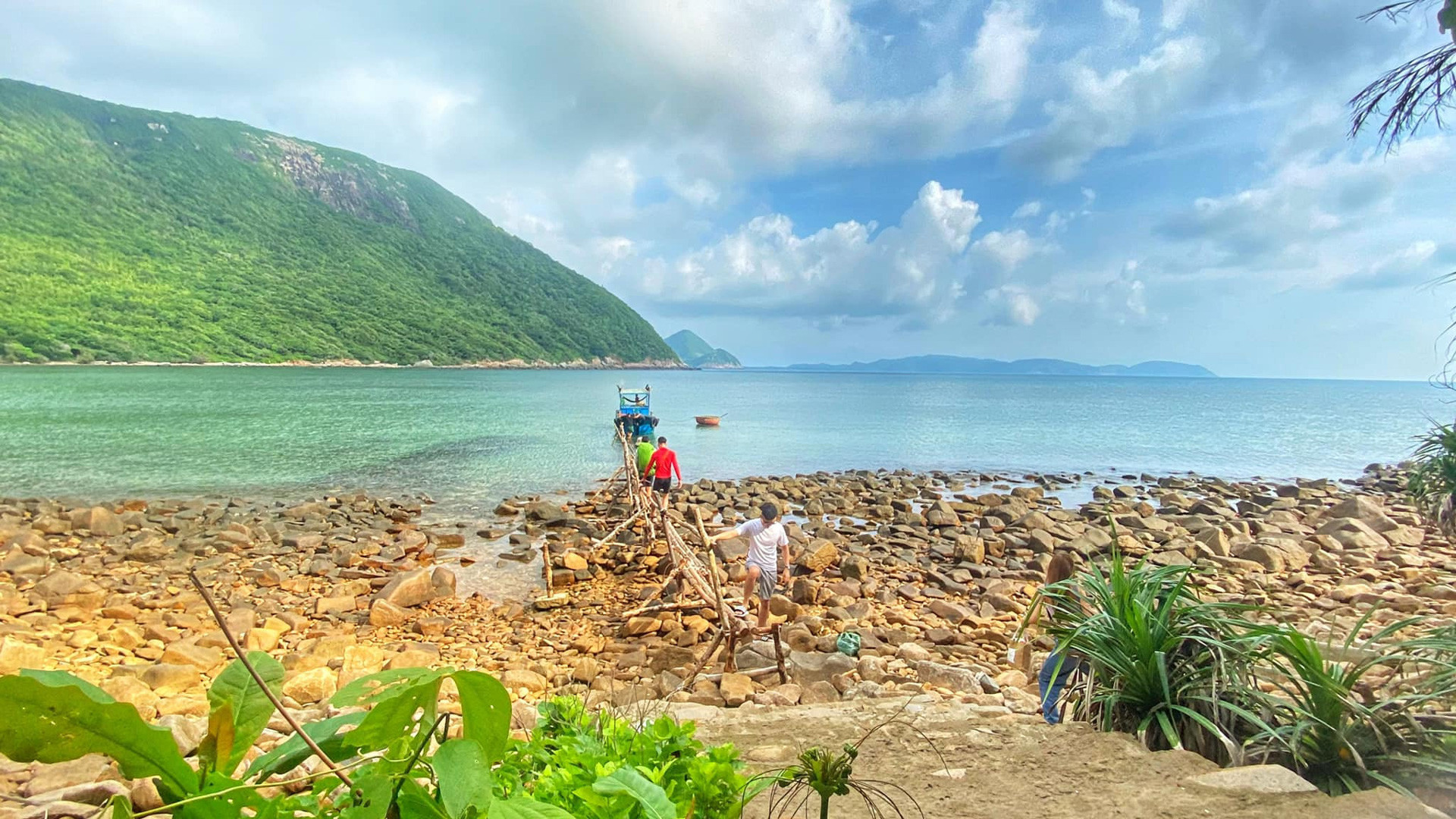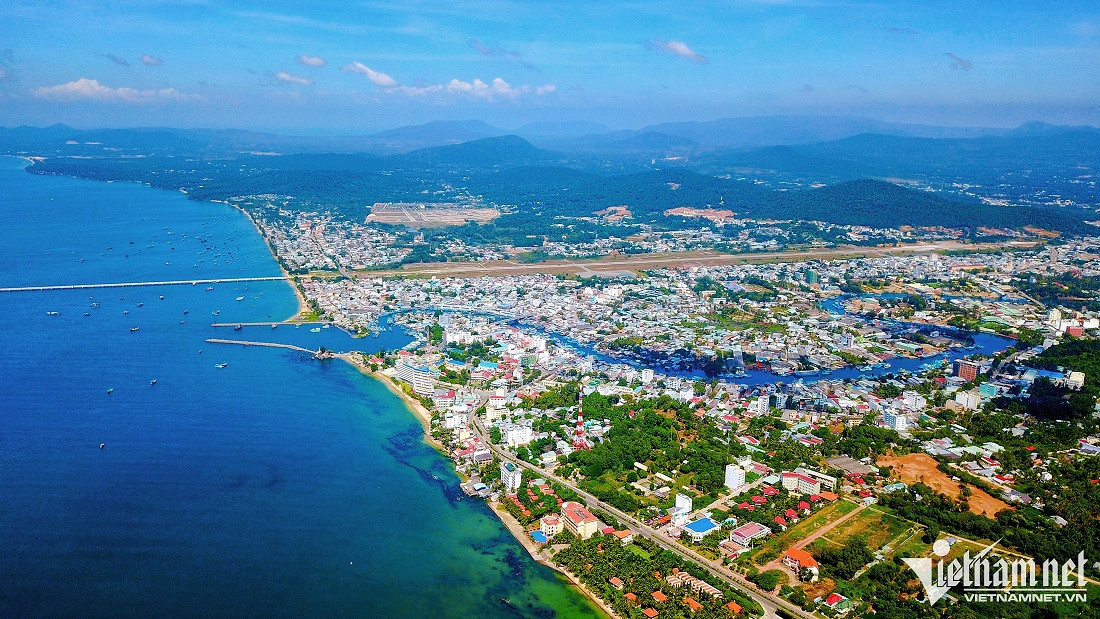Under the new plan to reorganize and restructure administrative units across the country and establish a two-tier local government system, all district-level administrative units will cease operations as of July 1.
By August 15 at the latest, new commune-level administrative units - including communes, wards, and special districts - will be fully operational.
Among these, island districts and island cities will be reclassified as commune-level units under the new name: “special districts.”
Currently, Vietnam has 11 island districts: Van Don, Co To, Cat Hai, Truong Sa, Hoang Sa, Phu Quy, Kien Hai, Bach Long Vi, Con Co, Ly Son, and Con Dao, and one island city: Phu Quoc. All of these will be converted into special districts.
Specifically for Phu Quoc City in Kien Giang Province, the government has approved a proposal to separate Tho Chau Commune to form a new independent district. As a result, two special districts will be established: Phu Quoc and Tho Chau.
Therefore, by August 15 at the latest, the country will officially have 13 special districts.
Below are some key details about the area, population, and socio-economic characteristics of these 13 soon-to-be special districts:
Van Don - Quang Ninh

Area: 582 km²
Population: approximately 60,000 (2023)
With over 600 islands of various sizes, Van Don is one of the country’s most promising localities for developing a maritime economy and high-end tourism.
Situated within a key northern coastal economic zone, it is being planned as a modern, eco-friendly, smart island city with a strong focus on sustainable development.
The local economy is driven by sectors such as luxury coastal tourism, high-tech aquaculture, logistics, and maritime services.
Infrastructure is being extensively developed, including Van Don International Airport, expressways, and a deep-sea port.
Co To - Quang Ninh

Area: 47 km²
Population: approximately 6,700 (2023)
Co To consists of over 50 islands inhabited by seven ethnic groups: Kinh, Tay, Nung, Dao, San Diu, San Chi, and Hoa.
As a strategic frontier district, it plays an important role in both sovereignty protection and maritime economic development. In recent years, Co To has shifted its economic structure toward services, tourism, and fisheries.
With its unspoiled landscapes, clean beaches, and fresh air, the area has become a popular destination for eco-tourism and marine leisure travel.
Fisheries remain a vital sector, with expanding aquaculture models and supporting logistics. Infrastructure has gradually improved, including upgrades in electricity, water, transportation, and healthcare services for both residents and tourists.
Cat Hai - Hai Phong

Area: 345 km²
Population: 31,996 (2019)
Comprising 366 islands, Cat Hai is home to Cat Ba Island—an eco-tourism hub and a gateway to the region via the Lach Huyen deep-water port.
Cat Hai holds strategic importance in northern Vietnam's maritime economy and logistics. It is home to the Dinh Vu - Cat Hai economic zone, featuring industrial parks and modern seaports.
In addition to industry, tourism thrives here, especially in the Cat Ba Archipelago, which is recognized as a UNESCO World Natural Heritage site.
The district also has strengths in high-value fisheries, including aquaculture and seafood processing.
Truong Sa - Khanh Hoa

Truong Sa comprises coral reefs, sandy cays, and submerged rocks. It holds strategic importance in national defense and maritime sovereignty.
Despite its remote location and harsh natural conditions, Truong Sa has gradually been developed into a vital outpost.
Its economy relies on fishing and marine resource extraction, and the area holds great potential in oil, renewable energy, and marine services. Infrastructure such as housing, clinics, schools, broadcasting stations, and defense-civil projects is in place across the islands.
Maintaining a civilian and military presence here is crucial, not just economically but also politically and socially, demonstrating Vietnam's commitment to protecting its sovereignty in the East Sea.
Hoang Sa - Da Nang
Hoang Sa holds a vital position in Vietnam's long-term maritime strategy. It has abundant marine resources including oil, coral, seafood, and offshore wind energy potential.
The district has become a focal point for public education and awareness on maritime sovereignty. It remains an inseparable and sacred part of Vietnam's territory.
Phu Quy - Binh Thuan

Area: approximately 18 km²
Population: approximately 29,000 (2023)
Comprising 12 islands, Phu Quy’s economy revolves around fishing, aquaculture, and marine tourism.
Located about 120 km from Phan Thiet City, it has great potential for offshore fishing, cage aquaculture, and seafood processing.
In recent years, Phu Quy has evolved into a coastal tourism destination blending cultural experiences and local hospitality, featuring pristine beaches and fresh seafood.
Kien Hai - Kien Giang

Area: approximately 28 km²
Population: approximately 20,550 (2019)
With 23 islands, Kien Hai boasts scenic landscapes and advantageous positioning. It is well-suited for eco-tourism, beach resorts, and community-based tourism.
The district’s economy is anchored in seafood harvesting and aquaculture—especially cobia, grouper, and sea urchins. Many residents combine fishing with tourism to create sustainable livelihoods.
Although infrastructure is limited, ongoing investment in electricity, ports, schools, and healthcare is improving living conditions. The local government prioritizes marine resource protection and ecosystem conservation, aiming to build a green, sustainable island district.
Bach Long Vi - Hai Phong

Area: approximately 2.33 km²
Population: 1,152 (2023)
Located in the Gulf of Tonkin, Bach Long Vi is the most offshore island in northern Vietnam. It plays a vital role in maritime economic development, sovereignty protection, and marine scientific research.
It has rich fishery resources and favorable conditions for offshore fishing. The district is developing support services for the fishing industry and promoting sustainable aquaculture practices, including farming cobia, pomfret, and seaweed.
Bach Long Vi is also a meteorological and marine environmental monitoring site.
Con Co - Quang Tri

Area: approximately 2.3 km²
Population: 400-500 (2022)
Located near the Quang Tri coastline, Con Co holds strategic significance for national defense and is considered a “living milestone” on the sea. Its economy is primarily based on fishing, marine logistics, and harvesting coral reef resources.
Recent plans emphasize eco-tourism and conservation, highlighting the island’s revolutionary history and marine biodiversity.
Home to many endemic marine species, Con Co is ideal for scientific research and nature conservation. Though small, it plays a critical role in central Vietnam's sustainable maritime development.
Ly Son - Quang Ngai

Area: 10.39 km²
Population: 22,174 (2022)
Ly Son consists of two main islands, known for their garlic and shallot farming. Alongside agriculture, the district has developed strong fisheries and inshore aquaculture.
Tourism is growing rapidly thanks to its unique geology, beautiful beaches, and the cultural heritage of the Sa Huynh and Champa civilizations. It is also home to many historical relics.
Con Dao - Ba Ria Vung Tau

Area: 75.79 km²
Population: 12,000 (2022)
Con Dao is known for its natural beauty, historical significance, and commitment to green development. Once infamous as a “hell on earth” during the resistance wars, it is now preserved as a national heritage site.
Its economy is transforming, driven by eco-tourism, luxury resorts, and spiritual tourism.
The Con Dao marine reserve features mangroves, coral reefs, and rare species such as dugongs and sea turtles. The island is pursuing a “smoke-free” development model linking tourism with environmental education and quality of life improvement.
Phu Quoc (including Tho Chau) - Kien Giang

Area: 589.27 km²
Population: 179,480 (2020)
Phu Quoc is Vietnam’s first island city and the country’s largest marine economic hub. It offers a favorable environment for luxury tourism, trade, services, and agro-fisheries processing.
Its well-developed infrastructure includes an international airport, seaport, and the North-South highway. The island attracts millions of tourists annually and is a magnet for strategic investors.
The local economy also includes aquaculture, traditional fishing, and fish sauce production.
Tho Chau - Phu Quoc, Kien Giang
Area: 13.98 km²
Population: 1,829 (2023)
Tho Chau is the farthest commune from Kien Giang Province, located more than 100 km from downtown Phu Quoc and near the maritime border with Cambodia. It holds strategic significance as a western maritime gateway and has long-term potential for maritime economic development.
The economy revolves around fishing, cage aquaculture, and traditional seafood harvesting. Most residents depend on the sea for their livelihood, supplemented by small-scale farming.
Essential infrastructure such as electricity, fresh water, healthcare, schools, and communications has been gradually developed. While tourism is still emerging, its unspoiled nature, clear waters, and white sandy beaches make Tho Chau a future hotspot for eco-tourism and relaxation.
On February 24, at the 32nd session of the 10th Kien Giang Provincial People's Council, delegates voted to approve the establishment of Tho Chau District based on the current administrative area of Tho Chau Commune under Phu Quoc City.
Nguyen Thao